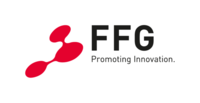Investigates the suitability of clay as sustainable and cost-effective material for noise barriers.
Background
Noise barriers are usually made of energy intensive materials (i.e., concrete, glass, and aluminium) that leave a large ecological footprint and incur high costs. On top of that, it is difficult to dismantle or replace such walls. Inexpensive, sustainable and future-proof alternatives are therefore urgently needed. Clay meets these criteria and has several other advantages as well. It is regionally available, easy to recycle, has a low primary energy requirement and a porous surface making it an excellent sound insulator. Moreover, as a by-product in rail and road construction, clay is excavated in large quantities. Thus, instead of disposing it at great expense, it can be used for other purposes.
Project content
Using clay as building material has a long tradition worldwide. However, it is rarely used for the construction of noise barriers whereby the few attempts made so far dealt with concepts for highways only. The insights gained in building noise barriers for roads can only be partially transferred to rail traffic. This not only concerns material characteristics and physical parameters such as dynamic loads (pressure and suction caused by passing trains), fatigue resistance of the walls and resonance effects, but also legal aspects such as design specifications, standards and guidelines on acoustic properties and stability. Noise barriers made of clay are an under researched area in in rail transport. This exploratory project aims to change that.
Project objectives
Measures leading to a sustainable use of resources are urgently needed. The rail sector takes its share of responsibility and has set itself ambitious goals. It plans to be completely climate-neutral by the end of 2040. To achieve this, it is necessary to be open for new ideas optimize in many areas. In the present project we pursue such a new idea by exploring whether clay is a suitable substitute for conventional building materials in constructing noise barriers. This leads to the following research questions:
- What type of cob building techniques are suitable for noise barriers (cob walling, rammed clay, clay bricks, earthbags, lightweight clay, clay composite building materials)?
- Where are synergies in material procurement creating ecological and economic benefits? Can excavated clay, which is often treated as waste, serve as a building material?
- What are the dynamic loads a noise barrier has to withstand?
- How well does clay work as a material for sound insulation and sound absorption?
- How well does clay as building material perform in a life-cycle analysis compared to conventional noise barriers?
- What are the ecological benefits of using clays for building noise barriers? Can they help to conserve biodiversity?
Methodology
The project team tests how different variants of the building material withstands various loads and external forces. This encompasses, to give a few examples, the (dynamic) impact caused by passing trains, by the effects of wind, by stones or the forces that arise during snow removal. We also conduct a life cycle assessment (LCA) and determine life cycle costs. The LCA includes material and energy consumption, process emissions, and the GWP (Global Warming Potential). The impact on biodiversity and the potential of clay as "green" material that blends well with the natural environment are further key components of the investigations. The life cycle costs give insight into the economic viability of clay as material for noise barriers and draw a comprehensive picture of its advantages and disadvantages.
Result
The project breaks new ground in establishing clay as sustainable alternative to build noise barriers. Different manufacturing methods are compared and tested in order to determine an optimal material composition. The project team adopts a holistic approach and considers a wide range of factors, including aspects such as cost-effectiveness, sustainability, and environmental compatibility. Overall, the project is making an important contribution to climate neutrality.
Mobility of the Future is a research, technology and innovation funding programme of the Republic of Austria, Ministry of Climate Action. The Austrian Research Promotion Agency (FFG) has been authorised for the programme management.
You want to know more? Feel free to ask!
International Coordinator
Department of Rail Technology and Mobility
- Technische Universität Wien, Fachbereich Baugeschichte und Bauforschung
- Netzwerk Lehm




